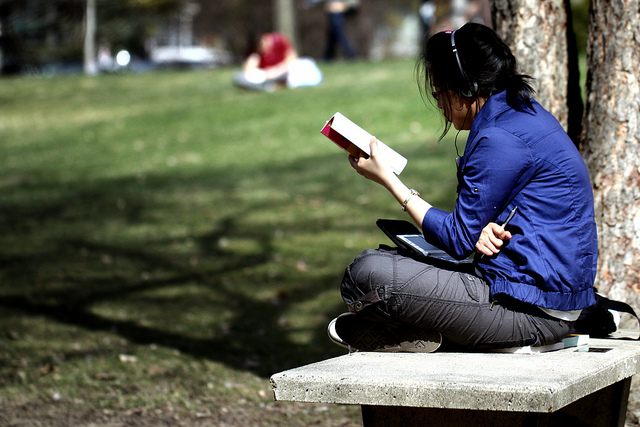A little respect – and attention – for the non-traditional collegian
Now that we’ve reached September, children have returned to school. There are moments full of smiles and tears with parents walking the halls of schools for the first time with their children. Moments where children wish Mom and Dad would just leave and let the start of fourth grade commence already. Moments where the college freshman runs at top speed across campus thanks to an alarm clock that did not work (or maybe it did).
Among these folks are the non-traditional students. They’re not always easy to find. The common definition of a non-traditional student is based on age – over 24, typically. But there are other characteristics that the National Center for Education Statistics note as well (delayed college start, attends college part-time, works full time, is independent for financial aid purposes, et al). Add those who are married and with children and you start to get a picture of the non-traditional student.
For college towns throughout West Michigan, it is important to note that a majority of college students these days are non-traditional. A quick walk to a Western Michigan University football game among traditional fresh-faced young students might make you think otherwise, but according to U.S. Department of Education data, more than 40 percent of the 18 million undergraduates were enrolled in two-year institutions (community colleges). Of those who were in four-year programs, about one in five were going to school part-time. Putting the numbers together, that will leave about 45 percent (or 8 million students) who are enrolled full-time at four-year schools.
Further, more than 2 million of the remaining students were over 21. Nearly a million were at least 25 and nearly 500,000 were in their 30s or older. Put it all together, there’s just over 5 million traditional students who are full time students of standard college age at four-year public or non-profit colleges. That’s about 29 percent of undergraduates.
Now, imagine the economic impact of the non-traditional student. WMU conservatively puts the university’s overall economic impact on the region at $500 million. On the fall 2013 semester census day, WMU reported 19,198 undergraduate students. If the education department’s percentages hold true, 71 percent of these are non-traditional students. Just having them each spend $1,400 floods the Kalamazoo area with $19.1 million. That’s nothing to easily ignore, especially in a college town.
The non-traditional student, in order to make it work, will take classes in the evenings. They will take classes online. They may need child care. They may need to commute to class. WMU and the Kalamazoo community should continue to do what they can to cater to the needs of the non-traditional student so they can successfully complete their programs.
When I think back to my undergraduate days as a WMU Bronco, there is one non-traditional student who stands out in my mind. He was my next door neighbor in Bigelow Hall and the group of us on the first floor affectionately called him “Grandpa Jay”. Always with a smile on his face, he not only worked hard to pass his classes, but he also provided a sense of stability during crazy weekends in the hall. We met my freshman year during move-in weekend and he was right next to me, running across campus when that alarm didn’t work on the first day of class.
I wish the current class of Broncos, both the traditional and the non-traditional, the best of luck as they start this semester. Enjoy the moment and thanks for the very positive things that you do for Kalamazoo.
See what new members are saying about why they donated to Bridge Michigan:
- “In order for this information to be accurate and unbiased it must be underwritten by its readers, not by special interests.” - Larry S.
- “Not many other media sources report on the topics Bridge does.” - Susan B.
- “Your journalism is outstanding and rare these days.” - Mark S.
If you want to ensure the future of nonpartisan, nonprofit Michigan journalism, please become a member today. You, too, will be asked why you donated and maybe we'll feature your quote next time!


 So-called “traditional” college students are going the way of raccoon coats at football games. (Photo by Flickr user Matt Katzenberger; used under Creative Commons license)
So-called “traditional” college students are going the way of raccoon coats at football games. (Photo by Flickr user Matt Katzenberger; used under Creative Commons license)